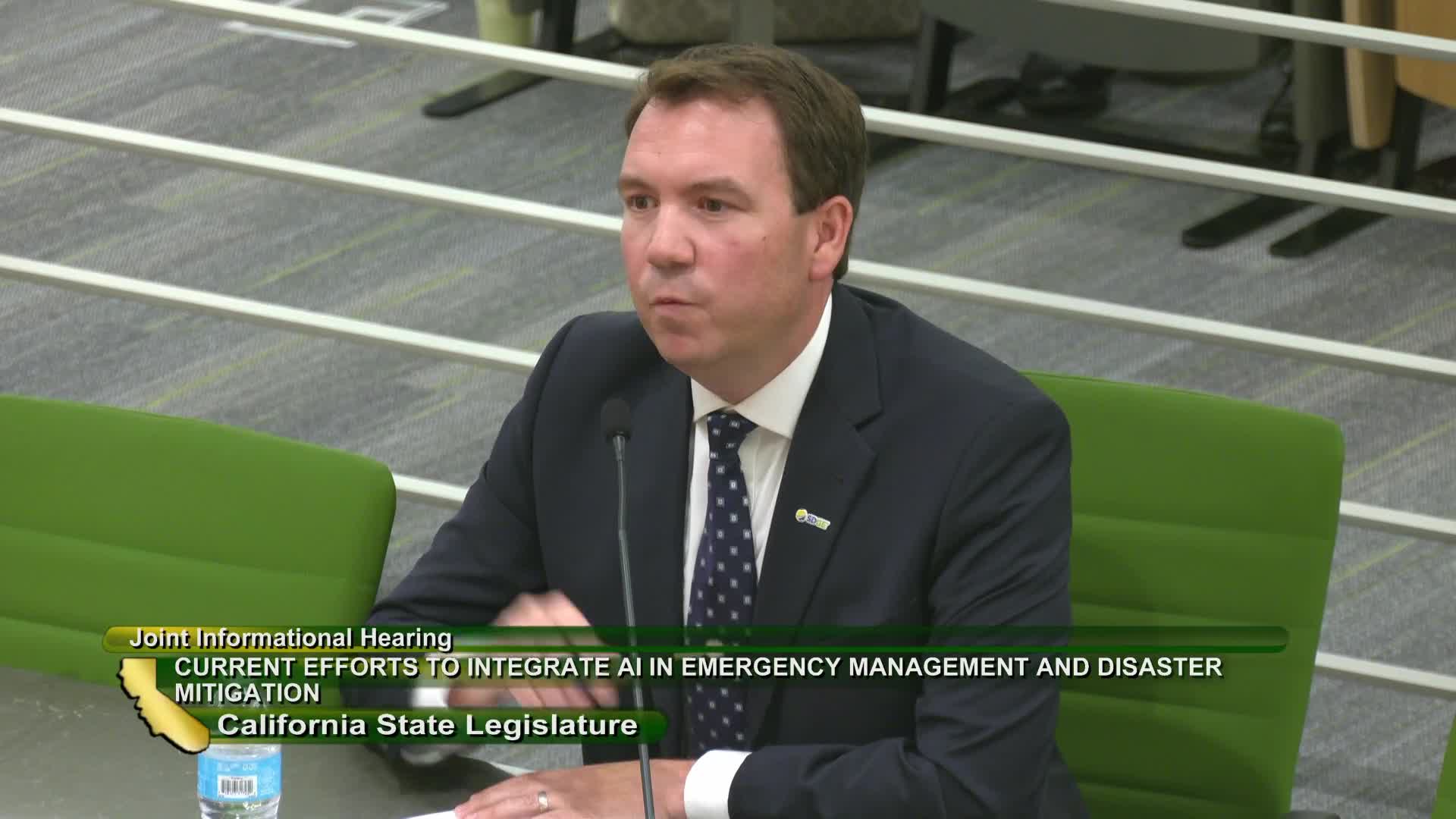Innovative AI technology tackles critical infrastructure risks
August 28, 2024 | Governmental Organization, Standing Committees, California State Senate, Senate, Legislative, California
This article was created by AI summarizing key points discussed. AI makes mistakes, so for full details and context, please refer to the video of the full meeting. Please report any errors so we can fix them. Report an error »

In a recent government meeting, officials discussed the critical importance of monitoring and managing risks to infrastructure, particularly in the face of increasing climate-related threats. The conversation highlighted the use of advanced technologies, including a camera network and drones, to identify and assess risks to critical infrastructure in San Diego County.
One speaker emphasized the need to understand the proximity of wildfires to major transmission corridors, noting that extreme heat waves could exacerbate stress on the electric system if these corridors are compromised. The integration of artificial intelligence in risk modeling was also discussed, allowing for the identification of high-risk areas and enabling targeted drone inspections. These drones capture images that are processed through intelligent systems to detect potential issues, such as loose bolts or damage from wildlife, which may not be visible from the ground.
Ahmed Wani, CEO of 1 Concern, contributed to the discussion by presenting alarming statistics regarding the financial impact of climate risks on U.S. corporations. He noted that in 2023 alone, U.S. companies faced over $100 billion in uninsured business interruption losses, yet none reported physical risk as a material concern. Wani criticized the reliance on traditional Geographic Information Systems (GIS) for risk assessment, revealing that a staggering 99.6% of listed companies and 99.8% of government critical infrastructure are not located in high hazard zones. However, he pointed out that 95% of these entities are still affected by disasters due to external factors like power outages and supply chain disruptions.
Wani's company has developed a system called \"Domino,\" which simulates the ripple effects of disturbances on interconnected infrastructure. This approach allows for a more comprehensive understanding of vulnerabilities and dependencies within critical systems, which can inform better planning and emergency response strategies. He shared insights from their work in Japan, where similar methodologies helped prioritize infrastructure budgets and improve disaster response.
The discussions underscored the urgent need for innovative solutions to enhance resilience against climate-related risks, emphasizing the role of technology in safeguarding critical infrastructure and ensuring community safety.
One speaker emphasized the need to understand the proximity of wildfires to major transmission corridors, noting that extreme heat waves could exacerbate stress on the electric system if these corridors are compromised. The integration of artificial intelligence in risk modeling was also discussed, allowing for the identification of high-risk areas and enabling targeted drone inspections. These drones capture images that are processed through intelligent systems to detect potential issues, such as loose bolts or damage from wildlife, which may not be visible from the ground.
Ahmed Wani, CEO of 1 Concern, contributed to the discussion by presenting alarming statistics regarding the financial impact of climate risks on U.S. corporations. He noted that in 2023 alone, U.S. companies faced over $100 billion in uninsured business interruption losses, yet none reported physical risk as a material concern. Wani criticized the reliance on traditional Geographic Information Systems (GIS) for risk assessment, revealing that a staggering 99.6% of listed companies and 99.8% of government critical infrastructure are not located in high hazard zones. However, he pointed out that 95% of these entities are still affected by disasters due to external factors like power outages and supply chain disruptions.
Wani's company has developed a system called \"Domino,\" which simulates the ripple effects of disturbances on interconnected infrastructure. This approach allows for a more comprehensive understanding of vulnerabilities and dependencies within critical systems, which can inform better planning and emergency response strategies. He shared insights from their work in Japan, where similar methodologies helped prioritize infrastructure budgets and improve disaster response.
The discussions underscored the urgent need for innovative solutions to enhance resilience against climate-related risks, emphasizing the role of technology in safeguarding critical infrastructure and ensuring community safety.
View full meeting
This article is based on a recent meeting—watch the full video and explore the complete transcript for deeper insights into the discussion.
View full meeting
